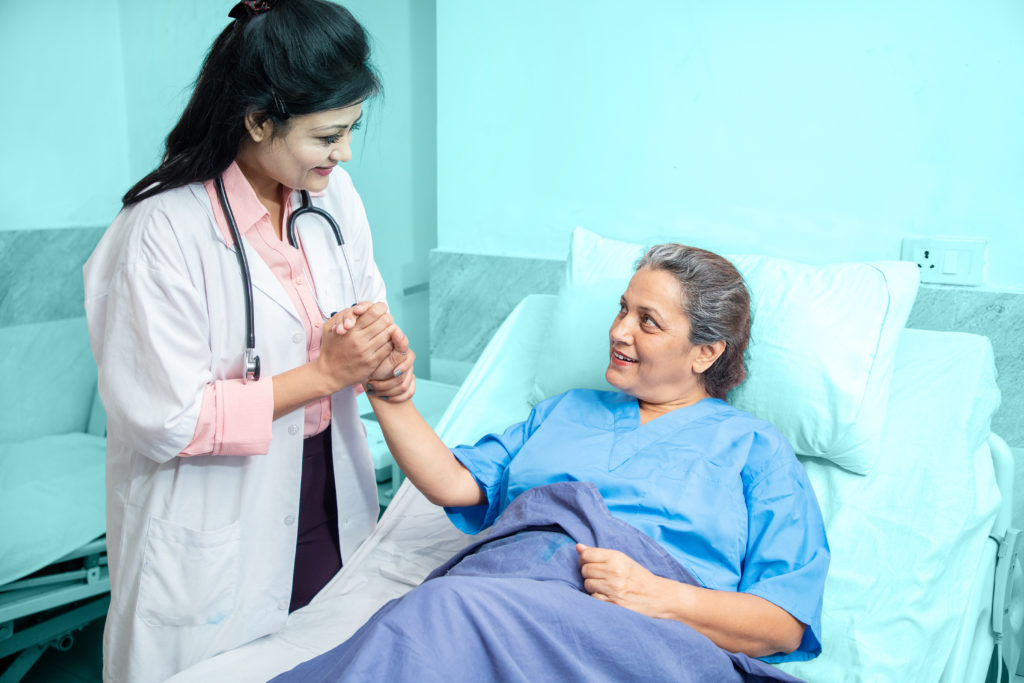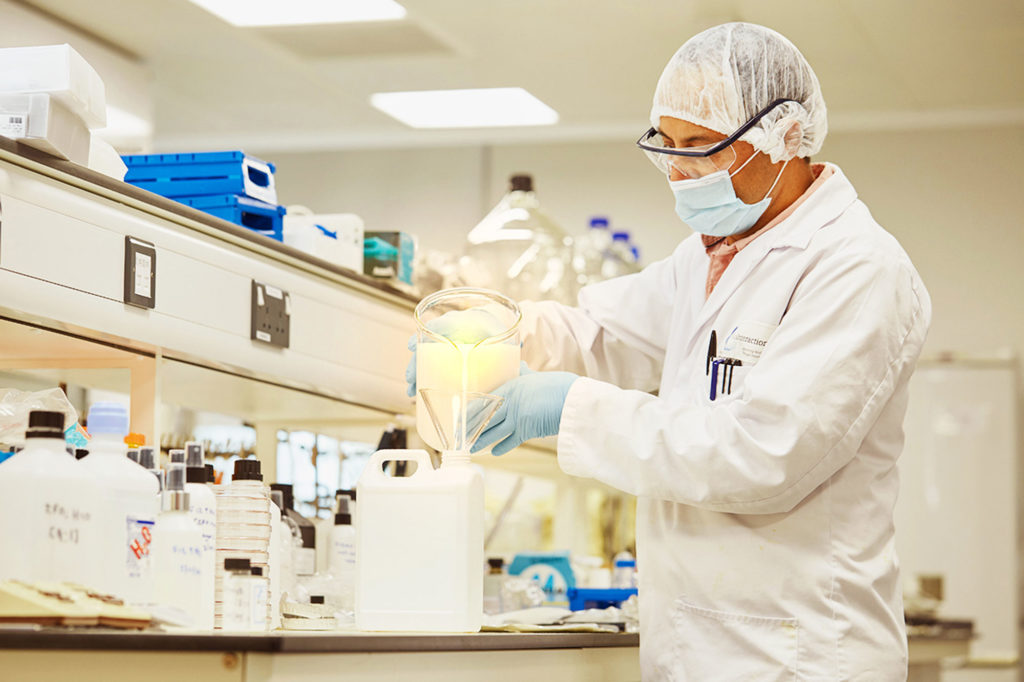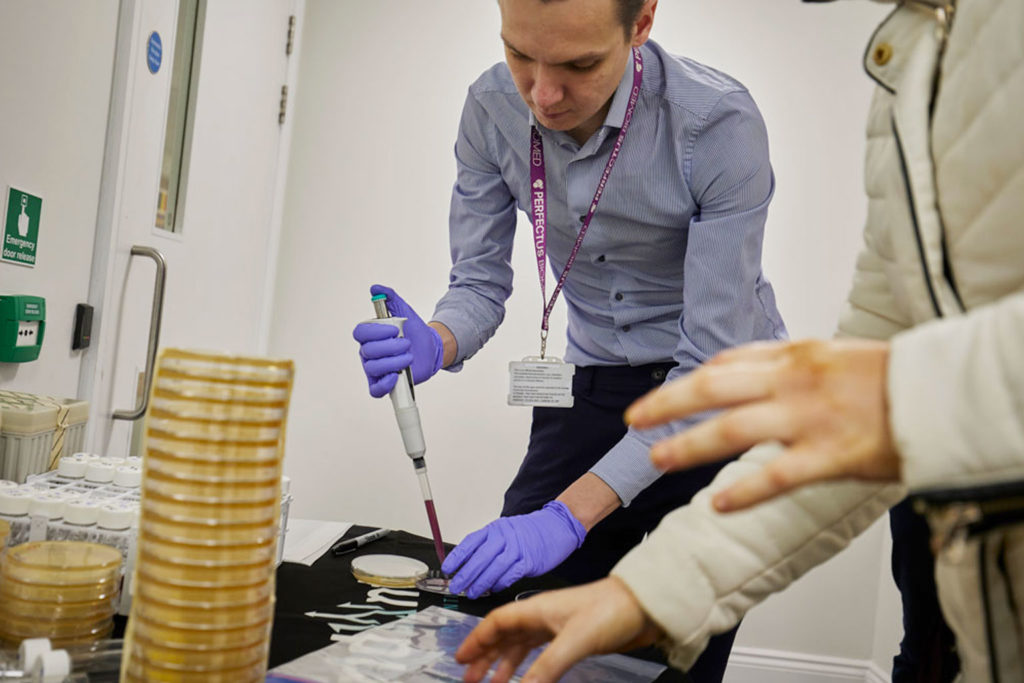Frequently touched devices and surfaces in critical care environment sites, and especially around the patients themselves, are more likely than objects anywhere else to be heavily contaminated with microbial colonies. Hospitals especially are breeding grounds for infectious bacteria. Bacteria such as Norovirus, Salmonella, Clostridium perfringens or Campylobacter are the most common bacteria found in clinical environments, and they can easily infect care staff with serious diseases upon coming into contact with them.
A study by the University of Porto, in Portugal, in collaboration with the Centro Hospitalar São João has found that there is a quantitative association between the number of times a surface is touched, and the amount of aerobic microbial soil retrieved from that surface. Put simply, the more times a surface is touched, the more contaminated it becomes. A study published in the Journal of Infection Control & Hospital Epidemiology has found that during a 12-hour shift, nurses establish contact with different surfaces an average of 821 times. The majority (58%) of these touchpoints are with, or in proximity, of patients, such as bed rails, bed tables and IV pumps.
This puts care personnel at a special risk for infection and contagion. Although hospital staff are trained to keep adequate hygiene during their shifts, hand hygiene compliance rates are low amongst healthcare workers in England, leaving them vulnerable to disease, and even when hand hygiene protocols are followed with complete accuracy, they are not perfect. In cases of dire emergency, hand hygiene protocols may be skipped altogether in favour of reducing the amount of time needed to get to a patient’s bedside, and this in turn increases the chances for healthcare personnel to become infected.
Exposure comes in many forms for healthcare personnel, but typically it is through hand-to-hand contact (direct contact during an examination), indirect contact (fresh germs on surfaces, like doorknobs, sinks, etc.), or airborne (coughing, sneezing, flying mucus, etc.) germ transmission. In the healthcare sector, leaders must put a bigger focus on giving their personnel effective disinfection options that are also quick and efficient even in case of emergency, so that they can continue to live quality lives while caring for the most vulnerable.
What can be done to break the transmission cycle?
To reduce the infection transmission cycle, more is required to protect the doctors and nurses working to heal the patients. The Covid-19 pandemic has brought forth major developments in infection control and antibacterial technology. Companies like Primel, which focuses on providing antimicrobial solutions to the patient care sector, have developed longer-lasting antimicrobial solutions that are specifically designed with hospital staff in mind.
Primel’s TridAnt®, for example, is a revolutionary coating technology that incorporates active and passive components to create the first truly non-leaching, effective, safe and durable antimicrobial coating which lasts for up to 48 hours on the skin. The intended result is a significant improvement in hand protection, and therefore, less risk to the staff caring for the patients. The key difference between TridAnt® and other solutions is that TridAnt®’s protective technology transfers from the skin to the surfaces touched, spreading its disinfectant properties to the most common touchpoints in hospitals and care areas. This makes it an effective disinfectant even in cases of emergency when reducing the amount of time that it takes doctors and nurses to get to the patients is of upmost importance.
This new technology that enhances the protection of medical personnel while being fully biocompatible with its environment represents a paradigm shift in the treatment of hygiene within hospitals and clinical environments. A widespread adoption of this new approach to skin hygiene will keep healthcare personnel healthy by reducing their risk of contracting infections from their patients, not only by killing existing microbes on their skin, but also by preventing the formation of new colonies on the surfaces they touch. Additionally, it will help clinical environments take one more step towards the effective sterilisation of patient areas.
It is time to break the infection cycle.
Overall, Primel’s TridAnt® significantly reduces the infection risk associated with medical procedures and actively reduces the contamination of pathogens within a patient. It is an important addition to the arsenal available to medical professionals in the fight against life threatening infections and diseases derived from direct contact with sick patients. This enhances the well-being of all medical personnel that comes into contact with patients, as well as allowing for more effective and efficient procedures for professionals.
The technology required to break the infection cycle in the healthcare industry already exists. Now it is up to healthcare leaders to make the change.


